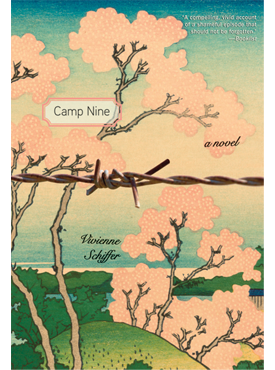75 years ago this week, President Franklin D. Roosevelt signed Executive Order 9066, which gave the United States military the ability to designate areas of the country from which “any and all persons may be excluded.” Although the order did not mention any particular group of people, the implications were clear. The order came two months after Pearl Harbor was attacked by Japan, and less than a week after the order was signed, people of Japanese descent were forced from their homes in California and much of the West Coast and relocated to ten camps established throughout the country. Two of these camps were in Arkansas: one in Rohwer, and one in Jerome. In 1988, President Ronald Reagan signed the Civil Liberties Act which compensated the victims of the internment camps, and offered a formal apology.
Increasingly, historical fiction is being used to help students engage with and understand historical events. The University of Arkansas Press has published two novels set in Japanese Internment Camps in Arkansas. These novels have been enjoyed by readers from high school age and up, many of whom never knew about this chapter of American history, or its Arkansas connection.
 The Arkansas Delta in this time of fear and prejudice are the setting for Camp Nine: A Novel by Vivienne Schiffer. The novel’s narrator, Chess Morton, lives in tiny Rook, Arkansas. Her days are quiet and secluded until the appearance of a “relocation” center built for what was, in effect, the imprisonment of over one hundred thousand Japanese Americans. Chess’s life becomes intertwined with those of two young internees and an American soldier mysteriously connected to her mother’s past. As Chess watches the struggles and triumphs of these strangers and sees her mother seek justice for the people who briefly and involuntarily came to call the Arkansas Delta their home, she discovers surprising and disturbing truths about her family’s past.
The Arkansas Delta in this time of fear and prejudice are the setting for Camp Nine: A Novel by Vivienne Schiffer. The novel’s narrator, Chess Morton, lives in tiny Rook, Arkansas. Her days are quiet and secluded until the appearance of a “relocation” center built for what was, in effect, the imprisonment of over one hundred thousand Japanese Americans. Chess’s life becomes intertwined with those of two young internees and an American soldier mysteriously connected to her mother’s past. As Chess watches the struggles and triumphs of these strangers and sees her mother seek justice for the people who briefly and involuntarily came to call the Arkansas Delta their home, she discovers surprising and disturbing truths about her family’s past.
 This painful episode in our country’s history is also fictionalized in Jan Morrill’s novel The Red Kimono. Set in 1941 amid the rising racial tensions in California, the story follows nine-year-old Sachiko Kimura, her seventeen-year-old brother, Nobu, and Terrence Harris, a boy whose father is killed at Pearl Harbor. In the months that follow Pearl Harbor, Terrence is convicted of the assault of Sachiko and Nobu’s father, and Sachiko and Nobu are sent to an internment camp in Arkansas. While behind bars and barbed wire, each of the three young people go through dramatic changes.
This painful episode in our country’s history is also fictionalized in Jan Morrill’s novel The Red Kimono. Set in 1941 amid the rising racial tensions in California, the story follows nine-year-old Sachiko Kimura, her seventeen-year-old brother, Nobu, and Terrence Harris, a boy whose father is killed at Pearl Harbor. In the months that follow Pearl Harbor, Terrence is convicted of the assault of Sachiko and Nobu’s father, and Sachiko and Nobu are sent to an internment camp in Arkansas. While behind bars and barbed wire, each of the three young people go through dramatic changes.
Other links:
Relocation Arkansas: Aftermath of Incarceration – A documentary by Vivienne Schiffer
Executive Order 9066, 75 Years Later
75 Years Later, Americans Still Bear Scars Of Internment Order
Actor George Takei Shares Family’s Story of WWII Internment
Save

